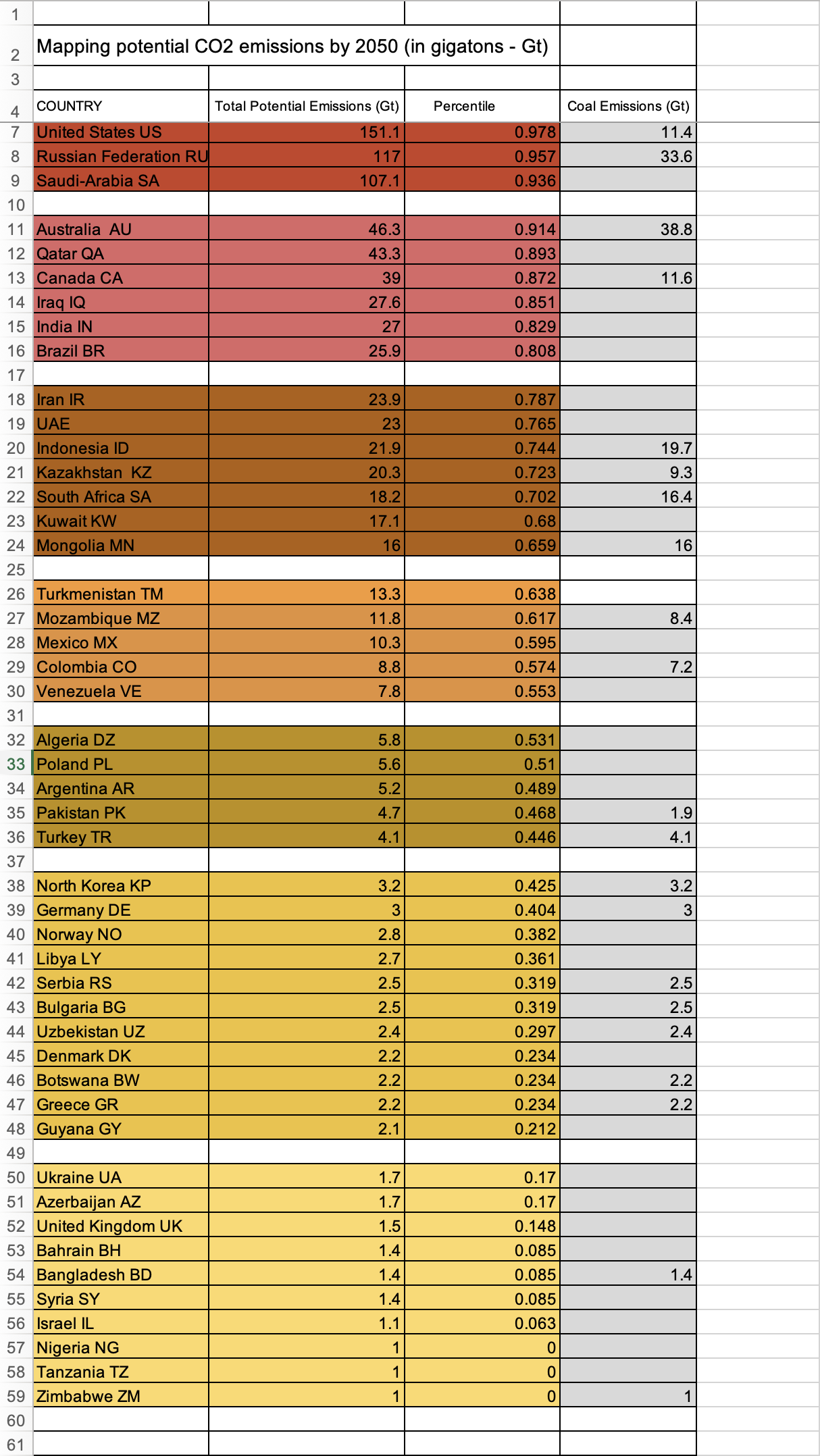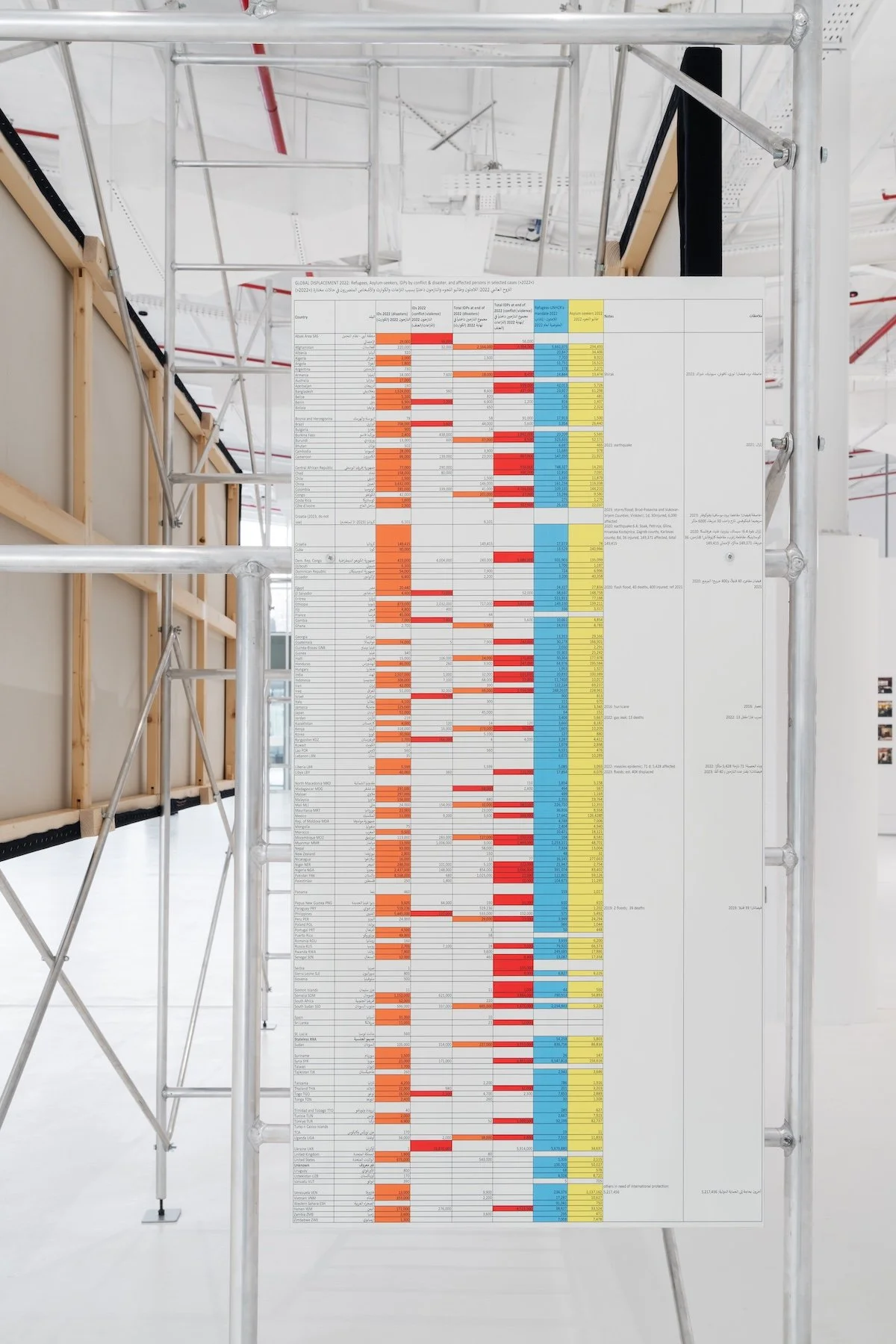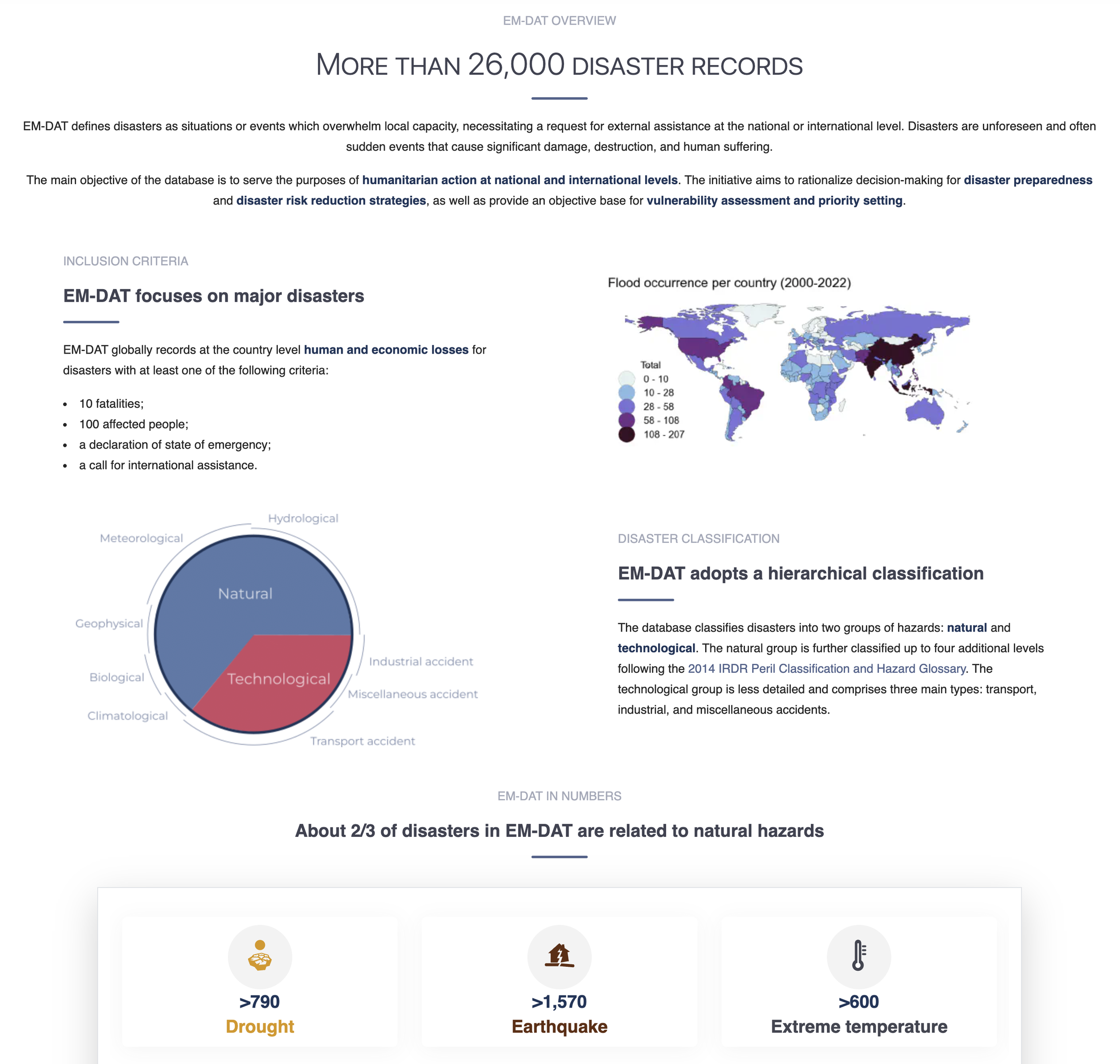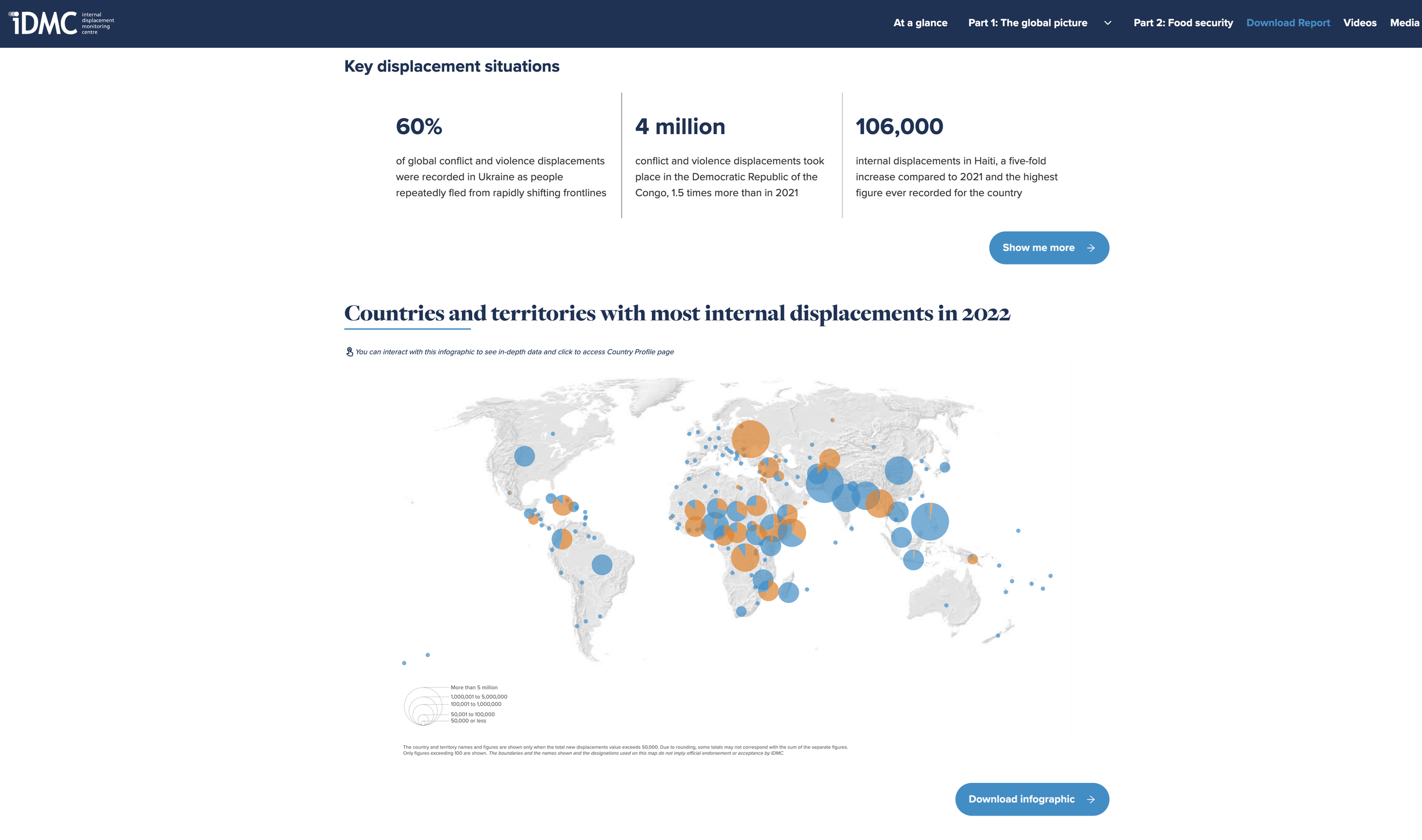
Conflict, Climate, Internal Displacement and Migration Nexus | Diriyah Biennale | 2024
After Rain, Diriyah Contemporary Art Biennale 2024, installation view. Tiffany Chung, Energy Policy vol.166: potential CO2 emissions until 2050 by key fossil fuel and coal extraction projects [each>1 Gt] worldwide (2023), center. Courtesy of the Diriyah Biennale Foundation, photo by Marco Cappellletti.
Energy Policy vol.166: potential CO2 emissions until 2050 by key fossil fuel and coal extraction projects [each>1 Gt] worldwide (2023), Embroidery on fabric, 140 x 350 cm
Detail
Process: digital mapping for embroidery
Data recompilation of potential Carbon Dioxide emissions until 2050 by selected key fossil fuel and coal extraction projects worldwide (only those above 1 gigaton each). Original source: “Carbon Bombs” - Mapping key fossil fuel projects, Energy Policy Journal vol. 166.
Installation view. Courtesy of the Diriyah Biennale Foundation, photo by Marco Cappelletti
Mapping Global Displacement and Migration: nexus dynamics between conflict & violence and climate disaster [UNHCR, IDMC, EM-DAT: cross-border refugees, asylum-seekers, IDPs and those affected in selected cases >2022<] (2023)
Global Displacement data compilation from the following sources: UNHCR Data Finder, Internal Displacement Monitoring Center (IDMC), International Disaster Database (EM-DAT)
Process: digital mapping of global displacement
UNHCR Data Finder
EM-DAT | International Disaster Database
IDMC | Internal Displacement Monitoring Center
The 2022 UNHCR data shows that 108.4 million people are forcibly displaced worldwide, with 35.3 million refugees; 5.4 million asylum-seekers; 5.2 million people in need of international protection. For 2022, IDMC maps 60.9 million internally displaced persons, in which 28.3 million displaced by conflict/violence and 32.6 million displaced by weather related events or environmental disasters. Other recent studies by the UNHCR, World Bank, and IOM highlight concerns for cross-border migration due to climate-related disasters and anticipate internal displacement cases to be 143 million by 2050 in Sub-Saharan Africa, South Asia, and Latin America.[1] In such context, it is critical to delineate internal displacement and cross-border movement in the context of conflict, climate, and migration nexus (CCM Nexus)—situations where conflict and/or violence interact or intersect with climate change and/or natural disaster in many countries, especially in the Global South. As the interplay between variables is very complex, it is critical to have an international law framework that responds directly to CCM Nexus. Without it, countries will continue to struggle at times of migration surges; all the while, refugees and migrants continue to face financial exploitation and violence in the hand of human traffickers.
As economic interest plays a crucial role in shaping geopolitics in many parts of the world, Chung’s works aim to demonstrate the intertwinement of armed conflicts, development, climate-related disasters, internal displacement, and migration. Compiling data and statistics from research, she and her team then use ArcGIS software to create infographics/digital maps. These digital maps are then used as templates for embroidering the works on fabric. The map Energy Policy vol.166: potential CO2 emissions until 2050 by key fossil fuel and coal extraction projects [each>1 Gt] worldwide (2023) tracks the potential carbon dioxide footprint worldwide with combined production (2019 - 2050) of oil & gas and coal, estimated through harvest mode analysis to be 318 billion barrels of oil (113 Gt CO2) and 64.2 billion tons of coal (128 Gt CO2). Chung used the data pulled from the 2022 research paper “Carbon Bombs” – Mapping key fossil fuel projects[2] published in Energy Policy journal vol.166 and crosschecked with other sources, focusing on countries with >1 gigaton potential CO2 emissions from existing and new key fossil fuel and coal extraction projects. Chung’s other map charts the global displacement and refugee migration in the context of CCM nexus, with the numbers of cross-border refugees, asylum-seekers, internally displaced persons (IDPs), and those affected in selected cases [>2022<]. Extracting the 2022 data from the UNHCR Data Finder, Internal Displacement Monitoring Center (IDMC), and International Disaster Database (EM-DAT), Chung compiled a spreadsheet with 6 groups of data, from which 4 categories are presented in the final map: disaster-induced IDPs, conflict-induced IDPs, refugees under the UNHCR’s mandate, and UNHCR-registered asylum-seekers, all presented in circles (bubbles) pinned to their countries of origin.
Chung’s rigorous research and inquiries drive forth her practice, through which she hopes to contribute to international policy making in the relevant areas. Using her artworks’ titles and data compilation sheets to provide the audience with entry points to the works, Chung also employs her striking visual vocabulary to draw people in and encourages them to do further research in understanding such complex data and issues. The embroidery nature of the artworks makes the map layouts with shapes and lines appear less precise compared to digital or printed maps. Chung’s works challenge us to think whether we really believe that cartography as a discipline is objective, definite, and accurately reflects the landscapes below from the gaze above—or if it relies on fantasy as much as geography.
[1] https://www.worldbank.org/en/news/press-release/2021/09/13/climate-change-could-force-216-million-people-to-migrate-within-their-own-countries-by-2050 accessed 13 September 2021.
[2] https://www.sciencedirect.com/science/article/pii/S0301421522001756#mmc1
![After Rain, Diriyah Contemporary Art Biennale 2024, installation view. Tiffany Chung, Energy Policy vol.166: potential CO2 emissions until 2050 by key fossil fuel and coal extraction projects [each 1 Gt] worldwide (2023), center. Courtesy of the Diri](https://images.squarespace-cdn.com/content/v1/604be7479e88d2344efa06fb/6a8d81fe-3f2a-4939-88dd-74dd7d4a77df/Press+06+copy.jpg)
![Energy Policy vol.166: potential CO2 emissions until 2050 by key fossil fuel and coal extraction projects [each 1 Gt] worldwide (2023), Embroidery on fabric, 140 x 350 cm](https://images.squarespace-cdn.com/content/v1/604be7479e88d2344efa06fb/b3d9989c-59a1-44a0-af32-1b1df3bd317b/01+Tiffany+Chung%2C+Energy+Policy+vol.166%2C+potential+CO2+emissions+until+2050+by+key+fossil+fuel+and+coal+extraction+projects+%5Beach_1+Gt%5D+worldwide+%282023%29%2C+Embroidery+on+fabric%2C+Courtesy+of+the+Diriyah+Biennale+Foundation%2C+photo+by+Marco+Capp+copy.jpg)









